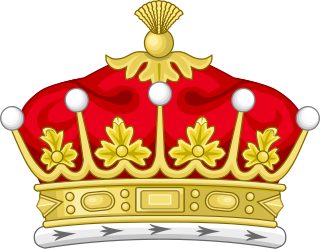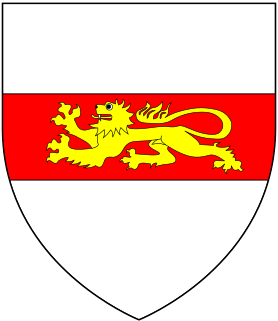 W
WEarl of Gosford is a title in the Peerage of Ireland. It was created in 1806 for Arthur Acheson, 2nd Viscount Gosford.
 W
WEarl Belmore is a title in the Peerage of Ireland that was created in 1797 for Armar Lowry-Corry, 1st Viscount Belmore, who had previously represented County Tyrone in the Irish House of Commons. He had already been created Baron Belmore, of Castle Coole in County Fermanagh, in 1781 and Viscount Belmore in 1789, also in the Peerage of Ireland. Born Armar Lowry, he was the son of Galbraith Lowry, Member of the Irish House of Commons for County Tyrone, and his wife Sarah, daughter of Colonel John Corry. In 1774, he assumed by Royal licence the additional surname of Corry. He was succeeded by his eldest son, the second Earl. He represented County Tyrone in both the Irish and British House of Commons, sat in the House of Lords as an Irish Representative Peer from 1819 to 1841, and served as Governor of Jamaica from 1828 to 1832.
 W
WThe title of Earl of Devon was created several times in the English peerage, and was possessed first by the de Redvers family, and later by the Courtenays. It is not to be confused with the title of Earl of Devonshire, held, together with the title Duke of Devonshire, by the Cavendish family of Chatsworth House, Derbyshire, although the letters patent for the creation of the latter peerages used the same Latin words, Comes Devon(iae). It was a re-invention, if not an actual continuation, of the pre-Conquest office of Ealdorman of Devon.
 W
WEarl of Granard is a title in the Peerage of Ireland. It was created in 1684 for Arthur Forbes, 1st Viscount Granard. He was a lieutenant-general in the army and served as Marshal of the Army in Ireland after the Restoration and was later Lord Justice of Ireland. He had already succeeded his father as second Baronet of Castle Forbes and been created Baron Clanehugh and Viscount Granard in 1675, also in the Peerage of Ireland. The Baronetcy, of Castle Forbes in county Longford, was created in the Baronetage of Nova Scotia on 29 September 1628 for his father, Arthur Forbes.
 W
WEarl of Lincoln is a title that has been created eight times in the Peerage of England, most recently in 1534. The title was borne by the Dukes of Newcastle-under-Lyne from 1768 to 1988, until the dukedom became extinct.
 W
WDuke of Beaufort, a title in the Peerage of England, was created by Charles II in 1682 for Henry Somerset, 3rd Marquess of Worcester, a descendant of Charles Somerset, 1st Earl of Worcester, legitimised son of Henry Beaufort, 3rd Duke of Somerset, a Lancastrian leader in the Wars of the Roses. The name Beaufort refers to a castle in Champagne, France. It is the only current dukedom to take its name from a place outside the British Isles.
 W
WDuke of Beaufort, a title in the Peerage of England, was created by Charles II in 1682 for Henry Somerset, 3rd Marquess of Worcester, a descendant of Charles Somerset, 1st Earl of Worcester, legitimised son of Henry Beaufort, 3rd Duke of Somerset, a Lancastrian leader in the Wars of the Roses. The name Beaufort refers to a castle in Champagne, France. It is the only current dukedom to take its name from a place outside the British Isles.
 W
WEarl of Huntingdon is a title which has been created several times in the Peerage of England. The medieval title was associated with the ruling house of Scotland.
 W
WEarl of Carysfort was a title in the Peerage of Ireland. It was created in 1789 for John Proby, 2nd Baron Carysfort. The Proby family descended from Sir Peter Proby, Lord Mayor of London in 1622. His great-great-grandson John Proby represented Huntingdonshire and Stamford in the House of Commons. His son and namesake John Proby was a Whig politician and notably served as a (civilian) Lord of the Admiralty. In 1752 he was raised to the Peerage of Ireland as Baron Carysfort, of Carysfort in the County of Wicklow. He was succeeded by his son, the second Baron. He was also a politician and was created Earl of Carysfort in the Peerage of Ireland in 1789. In 1801 he was further honoured when he was made Baron Carysfort, of the Hundred of Norman Cross in the County of Huntingdon, in the Peerage of the United Kingdom, which gave him a seat in the British House of Lords. His eldest son and heir apparent, William Proby, Lord Proby, predeceased him.
 W
WEarl of Donoughmore is a title in the Peerage of Ireland. It is associated with the Hely-Hutchinson family. Paternally of Gaelic Irish descent with the original name of Ó hÉalaighthe, their ancestors had long lived in the County Cork area as allies of the Mac Cárthaigh clan; they lost out during the times of Oliver Cromwell. One branch of the family converted to the Anglican Church and after inheriting territories through his mother and adding "Hutchinson" to Hely, became the Earl of Donoughmore.
 W
WEarl Nelson, "of Trafalgar and of Merton in the County of Surrey", is a title in the Peerage of the United Kingdom. It was created on 20 November 1805 for the Rev. William Nelson, 2nd Baron Nelson, one month after the death of his younger brother Vice-Admiral Horatio Nelson, 1st Viscount Nelson, the famous naval hero of the Napoleonic Wars and victor of the Battle of Trafalgar of 21 October 1805. The title is extant, the present holder being Simon Nelson, 10th Earl Nelson, who has an heir apparent. The family seat of Trafalgar House in Wiltshire was sold in 1948 by Edward Nelson, 5th Earl Nelson.
 W
WEarl of Lisburne is a title in the Peerage of Ireland. It was created in 1776 for Wilmot Vaughan, 4th Viscount Lisburne. He represented Cardiganshire and Berwick-upon-Tweed in the House of Commons and held minor governmental office.